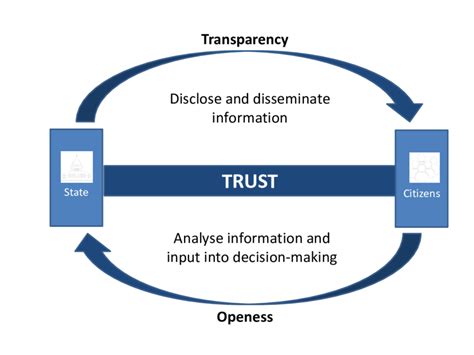
A Golden Retriever puppy’s comical fear of cows has captivated the internet, showcasing the often-unexpected reactions of young animals to new experiences. A video posted on social media features the adorable pup named Goose exhibiting clear apprehension towards a herd of cows during his first encounter with the farm animals, providing a lighthearted moment for viewers worldwide.
The video, which has quickly gone viral, depicts Goose initially approaching the cows with curiosity. However, as the large animals turn their attention towards him, his demeanor shifts dramatically. He cowers, retreating behind his owner’s legs, showcasing a clear sense of unease. The contrast between his initial curiosity and subsequent fear has resonated with many online, with viewers finding the puppy’s reaction both amusing and endearing. The pup’s fearful reaction is in stark contrast to the typical image of a playful Golden Retriever.
“He was all brave until they moo-ed,” Goose’s owner jokingly captioned the video, highlighting the turning point in the puppy’s interaction with the cows. This single line encapsulates the core of the video’s appeal: the sudden and comical shift in the puppy’s confidence. The video has accumulated hundreds of thousands of views, likes, and comments, with many users sharing their own stories of pets displaying unexpected fears or humorous reactions to new situations.
The online reaction to Goose’s farm fright highlights the broader appeal of animal videos on social media. Such content often provides a momentary escape from the stresses of daily life, offering viewers a dose of lightheartedness and amusement. The relatability of Goose’s experience—the universal theme of encountering something new and initially intimidating—further contributes to the video’s widespread popularity.
The incident also serves as a reminder of the importance of socialization for young animals. Exposing puppies to a variety of environments, sounds, and animals during their formative months can help them develop into well-adjusted and confident adults. While Goose’s initial reaction was one of fear, with continued exposure and positive reinforcement, he is likely to overcome his apprehension towards cows and other farm animals.
The Details of the Encounter
The viral video captures Goose’s introduction to cows in vivid detail. Initially, the puppy trots towards the pasture, tail wagging, seemingly eager to investigate the large, unfamiliar creatures. His movements are playful and confident, indicating a lack of apprehension. However, as the cows, perhaps sensing his presence, turn to face him, Goose’s body language undergoes a noticeable transformation.
His tail lowers, his ears flatten against his head, and his pace slows considerably. When one of the cows lets out a loud “moo,” Goose abruptly reverses course, darting behind his owner for safety. He remains there, peeking out cautiously, clearly hesitant to approach the cows again. The entire sequence unfolds in a matter of seconds, yet it is enough to convey the puppy’s genuine fear and the comedic nature of the situation.
The owner’s reaction is equally noteworthy. Rather than forcing Goose to confront his fear, they allow him to retreat and observe from a safe distance. This approach is consistent with positive reinforcement training methods, which emphasize rewarding desired behaviors and avoiding punishment or coercion. By allowing Goose to process the experience at his own pace, his owner is helping him build confidence and avoid developing lasting fear-based associations.
Social Media’s Response
The video’s virality underscores the power of social media to amplify everyday moments into global phenomena. Platforms like TikTok, Instagram, and Twitter provide a space for users to share their experiences, connect with others, and find moments of levity and entertainment. Animal videos, in particular, have consistently proven to be popular content, often generating high levels of engagement and positive sentiment.
In the comments section of Goose’s video, many users shared their own stories of pets displaying unexpected fears or humorous reactions to new situations. Some recounted instances of dogs being afraid of vacuum cleaners, balloons, or even their own reflections. Others shared anecdotes of cats reacting with surprise or confusion to everyday objects. These shared experiences create a sense of community and reinforce the idea that animals, like humans, can have quirky and unpredictable personalities.
The video also sparked a broader discussion about the importance of responsible pet ownership and the ethical treatment of animals. Many commenters praised Goose’s owner for their patient and understanding approach, highlighting the importance of allowing animals to process new experiences at their own pace. Others emphasized the need to avoid forcing animals into uncomfortable situations and to provide them with a safe and supportive environment.
Expert Opinions and Animal Behavior
Veterinarians and animal behaviorists offer valuable insights into understanding Goose’s reaction and the broader topic of fear in animals. Dr. Emily Weiss, a certified applied animal behaviorist, explains that fear is a natural and adaptive emotion that serves to protect animals from potential threats. “When an animal encounters something unfamiliar or potentially dangerous, its body triggers a ‘fight-or-flight’ response,” Dr. Weiss explains. “This response involves the release of hormones like adrenaline, which prepare the animal to either confront the threat or escape from it.”
In Goose’s case, the large size and unfamiliar appearance of the cows likely triggered his fear response. The loud “moo” sound may have further amplified his apprehension, as it could have been perceived as a warning or a threat. Dr. Weiss emphasizes that it is important to respect an animal’s fear and to avoid forcing it into situations that cause distress. “The goal is to help the animal gradually acclimate to the feared stimulus in a safe and controlled environment,” she says. “This process, known as desensitization and counterconditioning, involves pairing the feared stimulus with something positive, such as treats or praise.”
Dr. James Serpell, a professor of animal ethics and welfare, adds that socialization is crucial for preventing fear-based behaviors in dogs. “During the critical socialization period, which typically occurs between 3 and 16 weeks of age, puppies are highly receptive to new experiences,” Dr. Serpell explains. “Exposing puppies to a variety of environments, sounds, and animals during this period can help them develop into well-adjusted and confident adults.” While Goose’s initial reaction to the cows was one of fear, Dr. Serpell believes that with continued exposure and positive reinforcement, he can learn to overcome his apprehension.
The Broader Context: Animal Content and Internet Culture
Goose’s viral video is part of a larger trend of animal-related content dominating the internet. From cute cat videos to heartwarming rescue stories, animal content consistently generates high levels of engagement and positive sentiment on social media. Several factors contribute to the popularity of animal videos. First, they offer a momentary escape from the stresses of daily life. In a world often characterized by negativity and conflict, animal videos provide a dose of lightheartedness and amusement.
Second, animal videos tap into our innate connection with animals. Many people have a deep affection for animals and enjoy watching them interact with the world around them. Animal videos can evoke feelings of empathy, compassion, and joy. Third, animal videos are often highly shareable. They are easily disseminated across social media platforms, allowing them to reach a wide audience. The combination of emotional appeal, shareability, and accessibility has made animal videos a staple of internet culture.
However, the popularity of animal content also raises ethical considerations. It is important to ensure that animals featured in videos are treated humanely and that their welfare is not compromised for the sake of entertainment. Creators should prioritize the animal’s well-being above all else and avoid staging or manipulating situations that could cause distress. Viewers also have a responsibility to be critical consumers of animal content and to report any instances of abuse or neglect.
Long-Term Implications for Goose
The long-term implications of Goose’s farm fright will depend on how his owners handle the situation moving forward. If they continue to provide him with positive and supportive experiences around cows and other farm animals, he is likely to overcome his fear and develop into a confident and well-adjusted dog. However, if they force him into uncomfortable situations or fail to address his fear, he could develop lasting anxiety and fear-based behaviors.
It is important for Goose’s owners to continue socializing him with a variety of environments, sounds, and animals throughout his life. This will help him build confidence and resilience, making him less likely to develop fears in the future. They should also consult with a veterinarian or animal behaviorist if they have any concerns about Goose’s behavior or well-being.
Goose’s story serves as a reminder that animals, like humans, have their own unique personalities and experiences. While some animals may be naturally bold and adventurous, others may be more cautious and timid. It is important to respect each animal’s individual needs and to provide them with the support and understanding they need to thrive. By doing so, we can ensure that animals live happy, healthy, and fulfilling lives.
Conclusion: A Moment of Levity and a Lesson in Empathy
In conclusion, the story of Goose, the Golden Retriever puppy who was comically frightened by cows, has resonated with millions of people around the world. The video provides a momentary escape from the stresses of daily life, offering viewers a dose of lightheartedness and amusement. It also serves as a reminder of the importance of socialization for young animals and the need to respect their individual fears and anxieties.
Goose’s story highlights the broader appeal of animal videos on social media and the power of these platforms to amplify everyday moments into global phenomena. While the popularity of animal content raises ethical considerations, it also provides an opportunity to connect with others, share our experiences, and celebrate the unique bond between humans and animals.
Ultimately, Goose’s farm fright is more than just a funny video. It is a reminder that animals, like humans, have their own emotions and experiences, and that empathy and understanding are essential for building positive relationships with them. By appreciating the quirks and foibles of our animal companions, we can learn to be more compassionate and understanding individuals ourselves. The incident serves as a gentle nudge to remember the vulnerability and individuality of all living creatures, making it a moment of levity with a deeper lesson woven within.
Frequently Asked Questions (FAQ)
1. What caused Goose, the Golden Retriever puppy, to be afraid of the cows?
Goose’s fear was likely triggered by a combination of factors, including the cows’ large size, unfamiliar appearance, and the sudden “moo” sound they made. Puppies often experience fear when encountering new and potentially overwhelming stimuli. According to animal behaviorists, the “fight-or-flight” response can be activated by unfamiliar situations that an animal perceives as threatening.
2. How did Goose’s owner react to his fear, and why was that appropriate?
Goose’s owner allowed him to retreat behind their legs and observe the cows from a safe distance. This was an appropriate response because it avoided forcing Goose to confront his fear, which could have exacerbated his anxiety. Positive reinforcement methods emphasize allowing animals to process new experiences at their own pace and providing a safe and supportive environment.
3. What is the importance of socialization for puppies, and how does it relate to Goose’s experience?
Socialization is crucial for puppies during their formative months (3-16 weeks). Exposing them to various environments, sounds, and animals helps them develop into well-adjusted and confident adults. Goose’s initial fear reaction underscores the importance of this process; while he was initially scared, continued positive exposure can help him overcome his fear of cows.
4. What can Goose’s owners do to help him overcome his fear of cows in the future?
Goose’s owners can gradually acclimate him to cows through desensitization and counterconditioning. This involves exposing him to cows from a distance, rewarding him for calm behavior, and gradually decreasing the distance over time. Pairing the presence of cows with positive reinforcement, such as treats or praise, can help him associate them with positive experiences. Consulting with a veterinarian or animal behaviorist is also recommended.
5. Why do animal videos, like the one of Goose, become so popular on social media?
Animal videos often go viral because they provide a momentary escape from daily stresses, evoke feelings of empathy and joy, and are highly shareable. People connect with the innocence and unpredictability of animals, and these videos offer a dose of lightheartedness and amusement. The relatability of Goose’s experience – the universal theme of encountering something new and initially intimidating – further contributes to the video’s widespread popularity.









